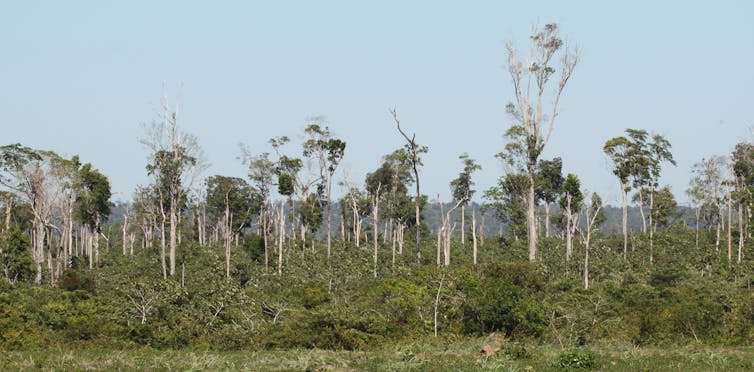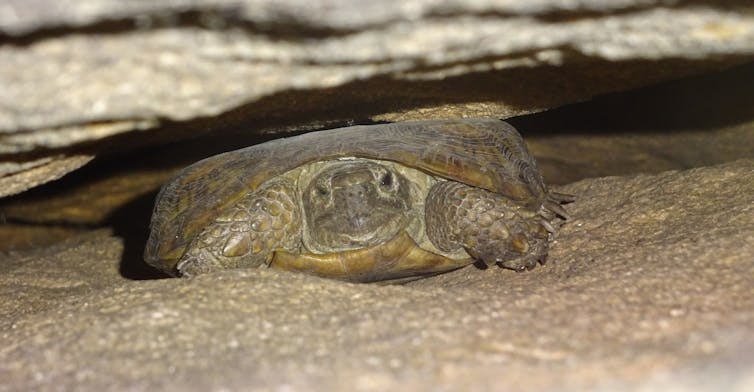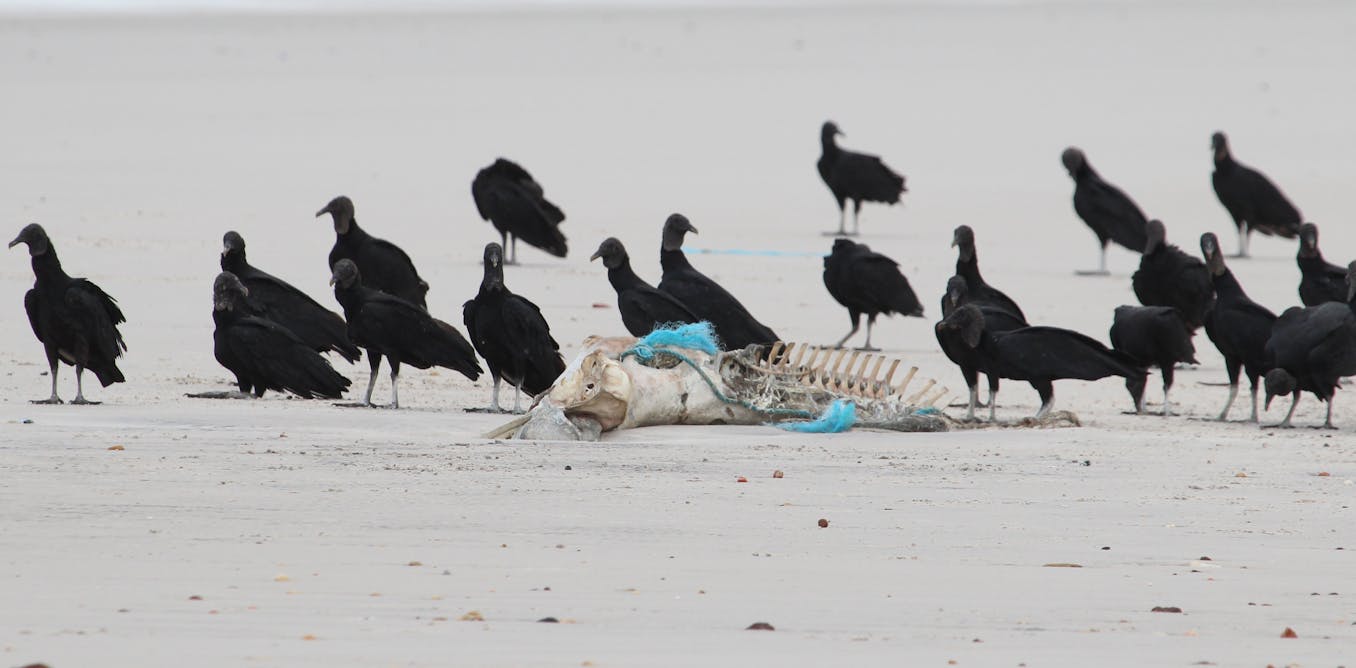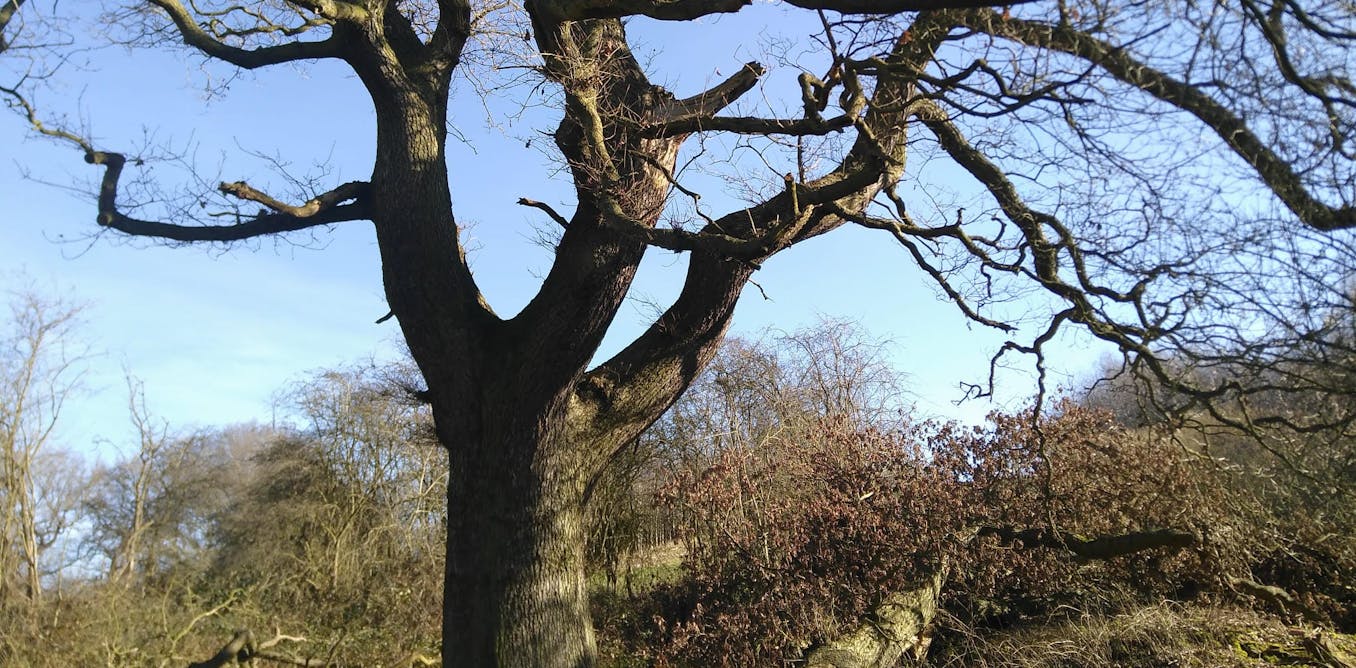Even for a conservation biologist numbed to bad news about nature, the biennial Living Planet report from the World Wildlife Fund (WWF) is a stark reminder of our failure to arrest the loss of biodiversity – the variety of living things and the ecosystems they live in.
The 2024 report uses an index that has tracked the fate of 35,000 populations of 5,495 species of wild vertebrates – that’s animals with a spinal column, so mammals, birds, reptiles, amphibians and fish – from 1970 to the present day. Over the past 50 years (1970–2020), the average size of these monitored wildlife populations has shrunk by 73%.
Freshwater populations (think fish, frogs and salamanders) are doing much worse, declining by 85%. Marine populations are faring slightly better, with declines of 56%. However, given emerging threats to the ocean ranging from microplastic accumulation to deep-sea mining, it is best not to regard these figures as absolute guides to conservation priorities.
There is also huge regional variation in these results. Latin America and the Caribbean have reported 95% declines in wild vertebrate populations since 1970, compared with 35% in Europe and Central Asia.
What these results tell us
Has the world lost nearly three-quarters of all its wildlife? Well, no. The trends actually reflect relative changes in population sizes. These may encompass trends for the same species faring differently in different regions. The challenge of compressing so much variation into a single index can create confusion. Many assume the figure relates to an absolute measure of loss of individuals or extinctions.
Alexander Lees
The Living Planet Index used in this report has attracted periodic criticism from ecologists. It was recently argued that removing sparse data from poorly monitored populations (more often in the tropics) is necessary to reduce bias. However, these biases are inherent in our understanding of the conservation status of wildlife.
There are more studies from countries in the temperate zone (Europe and North America, for example) and fewer from tropical ones; there are more studies on large or attractive birds and mammals, but fewer on everything else. Removing what sparse data we have from the tropics just compounds these biases.
The smaller declines in Europe and elsewhere in Earth’s temperate zone can be misleading. Huge changes in the populations of vertebrate life took place here millennia ago when agricultural expansion erased most of the forests, natural grasslands and wetlands. The cumulative change across the ages is certainly far higher than the rather arbitrary 1970 baseline reveals. Ecologists call this “shifting baseline syndrome”.
Crucially, scientists lack long-term monitoring data for most tropical species that are threatened by massive habitat losses happening right now. Conservation biology is a crisis discipline – it can’t wait until all available data is in before sounding the alarm.
There is broad agreement between many data sources that biodiversity is being eroded at a planetary scale. For example, research I led has highlighted that about half of all bird species probably have declining populations, versus 6% with increasing trends.
Tipping points
Beyond species, the WWF report has a particular focus on planetary tipping points. These are thresholds in the Earth system which, if breached, lead to irreversible consequences for people and nature.
For example, there may exist a tipping point beyond which the Amazon rainforest rapidly dies off. The regional climate is already shifting, with decreasing and less predictable rainfall coupled with a lengthening dry season that heightens wildfire risk. Deforestation is accelerating this process, as the trees themselves generate the humidity the forest needs to survive.

Alexander Lees, Author provided (no reuse)
Studies suggest that once around 20-25% of the total forest has been lost, the entire ecosystem could degenerate into some form of more open wooded ecosystem that would harbour much less carbon and far fewer species. Forest loss is currently around 17%.
This would not only unleash a cascade of extinctions for Amazonian biodiversity. It would also have local, regional and global effects on the climate that could imperil crops across the western hemisphere and beyond. Amazonian wildlife also has an incredibly important role in keeping the rainforest resilient, as do species in other ecosystems at risk of crossing tipping points.
The report is right to dwell on conservation success stories, such as the reintroduction and legal protection of the European bison and Dalmatian pelican. However, the return of many large mammals to Europe has been enabled by fewer human-wildlife conflicts as farmland has been abandoned. It isn’t, as some have claimed, a sign that economic development invariably leads to nature recovery.

Alexander Lees
This land has been abandoned to nature because of the globalisation of the food system. Essentially, it can be more profitable to produce food on better-quality land elsewhere. So, a gain for grey wolves in Bulgaria may have a bearing on the loss of habitat for maned wolves in Brazil, where species-rich savanna is converted to fields of soybeans that are then shipped to Europe to feed farmed animals.
What do we do?
These interconnected outcomes speak to the overarching challenge that humanity faces. Is exporting soybeans grown on land that was once rainforest to feed far-off fish farms the best use of resources? The report mentions food 181 times, as its production is the leading cause of habitat loss on land.
Even if data on population trends for tropical species is sparse, satellite and ground-based assessments are unanimous in showing a reduction in the extent of tropical habitats such as rainforests and savannas. Their replacement with farms and other land uses will not support the original biodiversity. So the implications of what we put on our plates reverberate across the biosphere. Changing our patterns of consumption is critical to both stopping habitat loss and sparing land for wildlife and the ecosystem services that global agriculture is dependent on.

Alexander Lees, Author provided (no reuse)
Protected areas have long been a cornerstone of measures to protect biodiversity. The 2022 Kunming-Montreal global biodiversity agreement asks that 30% of lands, waters and sea be protected by 2030. The UK has committed to this challenge, but already recognises that it is failing. The latest progress report states that only 2.9% of England’s land is effectively protected and well managed for nature.
The report acknowledges that protected areas are not delivering and urges the strengthening of Indigenous and local land tenure, payments for ecosystem services and more sustainable management. Most conservation biologists would agree. As previously highlighted, there is a dire need to challenge the prevailing neoliberal development model and tackle wealth-related drivers of biodiversity loss, such as the globalised commodity trade and carbon emissions.
The best time to do that would have been in 1970, the second best time is now.

Don’t have time to read about climate change as much as you’d like?
Get our award-winning weekly roundup in your inbox instead. Every Wednesday, The Conversation’s environment editor writes Imagine, a short email that goes a little deeper into just one climate issue. Join the 35,000+ readers who’ve subscribed so far.

The post “Wildlife loss is taking ecosystems nearer to collapse – new report” by Alexander C. Lees, Reader in Ecology and Conservation Biology, Manchester Metropolitan University was published on 10/10/2024 by theconversation.com





































Leave a Reply